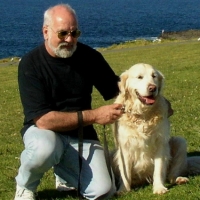DjangoBooks.com
Welcome to our Community!
Categories
- 19.8K All Categories
- 1.1K General
- 458 Welcome
- 57 Archtop Eddy's Corner
- 141 CD, DVD, and Concert Reviews
- 380 FAQ
- 26 Gypsy Jazz Italia
- 23 Photos
- 200 Gypsy Picking
- 21 Unaccompanied Django
- 15 Pearl Django Play-Along Vol.1
- 17 Gypsy Fire
- 41 Gypsy Rhythm
- 1.3K Gypsy Jazz University - Get Educated
- 128 Gypsy Jazz 101
- 214 Repertoire
- 210 History
- 701 Technique
- 48 Licks and Patterns
- 6 Daniel Givone Manouche Guitare Method Users Group
- 20 Eddie Lang Club
- 1.2K Gypsy Jazz Gear
- 756 Guitars, Strings, Picks, Amps, Pickups and Other Accessories
- 431 Classifieds
- 46 Recording
- 62 Other Instruments
- 18 Violin
- 5 Mandolin
- 22 Accordion
- 7 Bass
- 10 Woodwinds
- 321 Gypsy Jazz Events
- 139 North America
- 99 Europe
- 83 International
Who's Online (0)
Mario, Django, and classical guitars
 trumbology
San FranciscoNew
trumbology
San FranciscoNew
I came across this photo of Maccaferri in Summerfield's "The Classical Guitar" (2nd ed.). Supposedly it's from 1926, a period that that great article Michael posted <http://www.djangobooks.com/archives/2005/12/29/mario_maccaferri_plays_classical_guitar.html#000467> said that Mario was in London, becoming friends with Segovia, and working on guitar prototypes. If the date is correct, it's interesting to note how early the basic D-Hole design elements were in place, the cutaway and soundhole.
Any nylon-string affcianados out there ever played a Maccaferri-style nylon string guitar, either by Selmer or a modern luthier? Are there any disadvantages, tonally or otherwise, between a Mac classical and the standard Torres / Ramirez-type instruments?
Also attached, another photo of a wacky classical guitar being played buy English (by way of Russia) guitarist Boris Perott, a guitar that seems to be related to the strange double cuttaway that Django is seen playing in an early photo.
Finally, a photo familiar to most of you, either from the cover of Michael's "Unaccompanied Django" or from elsewhere, of Django playing a Maccaferri classical. I didn't realize that he was playing a classical in this photo until my copy of Michael's book arrived. There aren't any recordings of Django playing on a classical known to exist, are there?
Neil
Any nylon-string affcianados out there ever played a Maccaferri-style nylon string guitar, either by Selmer or a modern luthier? Are there any disadvantages, tonally or otherwise, between a Mac classical and the standard Torres / Ramirez-type instruments?
Also attached, another photo of a wacky classical guitar being played buy English (by way of Russia) guitarist Boris Perott, a guitar that seems to be related to the strange double cuttaway that Django is seen playing in an early photo.
Finally, a photo familiar to most of you, either from the cover of Michael's "Unaccompanied Django" or from elsewhere, of Django playing a Maccaferri classical. I didn't realize that he was playing a classical in this photo until my copy of Michael's book arrived. There aren't any recordings of Django playing on a classical known to exist, are there?
Neil










Comments
The strange double cutaway was made by Julian Gomez Ramirez. You can see a nice example of one from the Muse'e de la Musique in the new bio of Ste'phane Grappelli by Paul Balmer. I highly recommend trying to find a copy of "Guitar Stories Volume Two" by Michael Wright which is filled with photos of Maccaferri's work before, during, and after his association with Selmer. Of course the Francois Charle books is a must have as well.
From having read previous threads at www.hotclub.co.uk/ and www.guitarseminars.com I believe that Django did make several recordings with the gut string Mac.
I've never played one but I've heard that they have a unique sound much different than the standard classical popularized by Segovia. I believe that Mario was somewhat of a classical prodigy himself and somewhat of a rival to Segovia. I'm no expert on such things but I believe that classical technique was not as standardized then as it is now. While Segovia played with the flesh of his fingertips, Mario fell under the spell of his mentor Luigi Mozzani who played with a thumbpick and fingernails. I can't help but wonder if Maccaferri's technique may have driven certain aspects of the design.
By the way, it looks like Buffalo Brothers has a new Dell' Arte Maccaferri style classical for sale.
http://www.buffalobrosguitars.com/image ... index.html[/code]
I don't know if its on any of their recordings, though...
regards
Joe
If he did, none were ever released. I've listened to the 20 double-CDs Integrale and have yet to spot even a doubt for a gut-stringed guitar.
Those long-shadowed "artistic" pictures of Django with Maccaferri Concert were taken on one photo-session for Selmer to use in its marketing campaigns and advertisments. In return for his modelling Django got the right to pick guitars at will from the store (before the war). There are no real-live photos nor audio traces of Django with this model. I assume he used his deal for jazz models only.
http://www.jazzpartout.com
Cheers
Well, it wouldn't be the first time that one of my beliefs turned out to be wrong. If so, then I stand corrected and I thank you.
A German luthier named Henning Doderer makes acoustic basses of this design - for all I know he makes guitars too. Here are a few photos.
Thanks for the info! It would be fun to try and build a guitar in this style some day! Think it would sell?
Josh
Are you sure? Listen to "Un Baiser" from 1935 on Integrale Vol.2. It sounds like it could be gut-stringed to me.
http://www.youtube.com/thrip
A good suggestion...but no. If you listen to the upper register and especially the sound of the bended strings it becomes quite obvious (at least IMHO): a regular flat-top (not a SelMac) with old worn-out strings.
http://www.jazzpartout.com